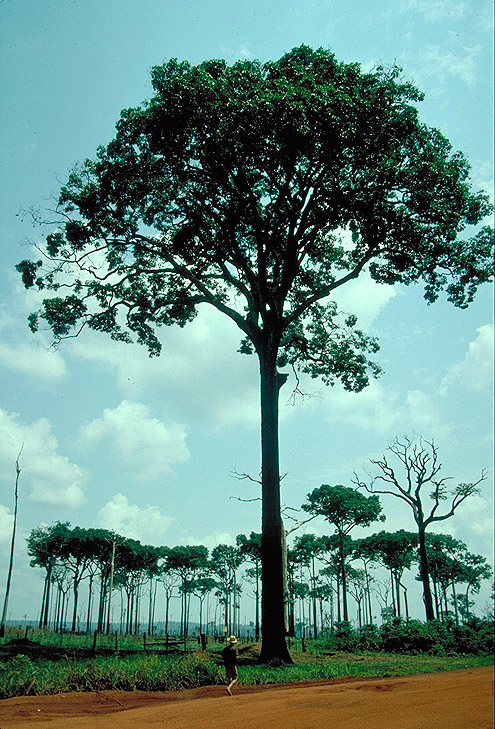Inside The New York Botanical Garden
deforestation
Posted in Science on January 5 2011, by Plant Talk
 Deforestation followed by fires for creating agricultural fields and pasture releases carbon dioxide into the atmosphere at such an accelerated rate in the tropics that it is a major contributor to global warming. Photo by Scott Mori
Deforestation followed by fires for creating agricultural fields and pasture releases carbon dioxide into the atmosphere at such an accelerated rate in the tropics that it is a major contributor to global warming. Photo by Scott MoriThere are many different types of vegetation in the New World tropics. But rather than being a homogeneous whole, what grows where and when in these tropics is determined to a large extent by water availability and temperature variation. Climate change could potentially have a drastic impact on this region, especially on the rain forests. Liebig’s Law of the Minimum states that plant or animal growth is controlled by the scarcest resource in the environment; this is known as a limiting factor. For example, if a soil possesses all nutrients needed for plant growth except potassium, then the paucity of that nutrient will limit the potential growth of all plants except those that can grow in potassium-poor soils. Potassium is therefore a limiting factor for that soil.
More on the application of Liebig's Law to the destruction of Amazonian rainforests below.
Posted in Science on September 15 2009, by Plant Talk
 |
Scott A. Mori, Ph.D., Nathaniel Lord Britton Curator of Botany, has been studying New World rain forests for The New York Botanical Garden for over 30 years. Over the course of his career, Dr. Mori has witnessed an unrelenting reduction in the extent of the tropical forests he studies. |
 On August 22, an image showing a small green patch of forest in the midst of a treeless area prepared for soybean cultivation appeared on the front page of The New York Times. The accompanying article explained that the fertile soils underlying forests in the state of Mato Grosso, Brazil, are suitable for supporting large soybean plantations. As evidence of the magnitude of the forest destruction, the author noted that an increasing demand for Brazilian soybeans led to the conversion of 700 square miles of forest to soybean fields in that state during the last five months of 2007 alone!
On August 22, an image showing a small green patch of forest in the midst of a treeless area prepared for soybean cultivation appeared on the front page of The New York Times. The accompanying article explained that the fertile soils underlying forests in the state of Mato Grosso, Brazil, are suitable for supporting large soybean plantations. As evidence of the magnitude of the forest destruction, the author noted that an increasing demand for Brazilian soybeans led to the conversion of 700 square miles of forest to soybean fields in that state during the last five months of 2007 alone!
The future of plant and animal diversity in Latin American forests depends on an understanding of how fragile the plant/animal interactions of tropical ecosystems are and the role human consumption plays in altering natural ecosystems. The relationships between plants and animals in the tropics are so closely co-evolved that man’s utilization of tropical forests almost always results in some loss of biodiversity. Soybean cultivation is an extreme example, because in this agricultural system soybeans entirely displace the plants and animals that formerly occupied the destroyed forests.
Trees remaining after forest destruction such as the Brazil nut tree above, photographed by W. W. Thomas, do not effectively reproduce. While this tree and others like it may still live for many years, they no longer produce the next generation of trees because the forest conditions needed for the pollination of their flowers, the dispersal of their seeds, and the growth of their seedlings into adult trees no longer exist.
Read More



